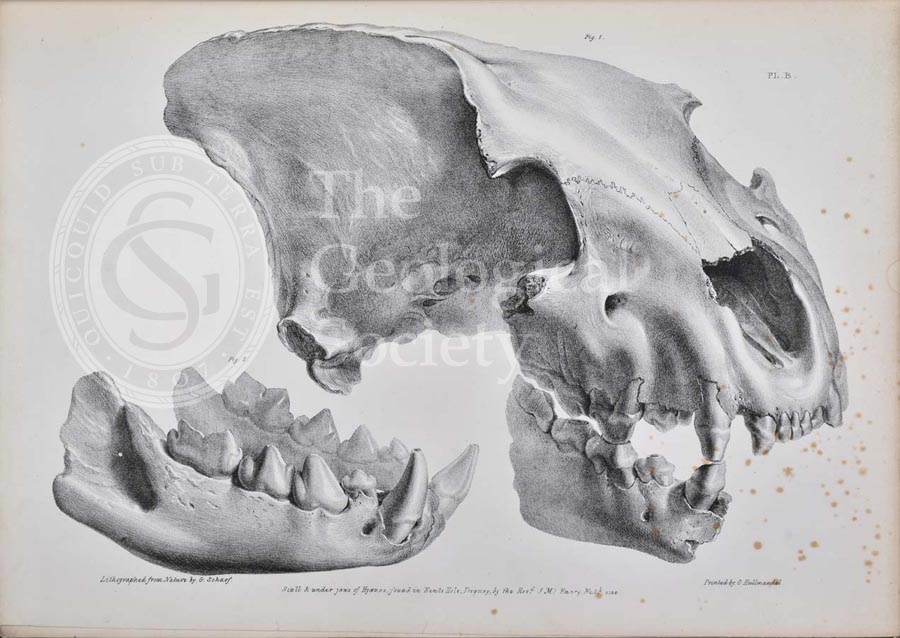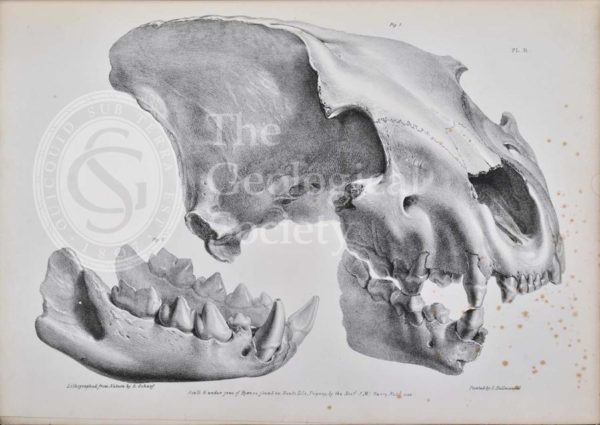Title: ‘Scull and under jaws of Hyaenas, found in Kent’s Hole, Torquay, by the Rev J McEnery’
Creator: George Scharf (1788-1860)
Description: From: MacEnery, John and Vivian, Edward. (ed.), ‘Cavern researches, or, Discoveries of organic remains, and of British and Roman reliques, in the caves of Kent’s Hole, Anstis Cove, Chudleigh, and Berry Head’, London: Simpkin, Marshall and Co.; E. Cockrem (1859).
Kent’s Cavern, in Torquay, had long attracted visitors as a natural curiosity but first came to scientific prominence in 1824 when a tourist Mr J Northmore was recommended to visit the site in his pursuit of possible Mithraic artefacts. There were no signs of druids but he did find mammalian remains.
The Rev William Buckland (1784-1856) had been conducting excavations in other bone caves during this period and was therefore alerted. Not having the time to oversee the project himself, Buckland encouraged the Roman Catholic priest Father John MacEnery (1797-1841) to undertake the excavations. Between 1825-1829 McEnery found the bones of extinct animals such as bears, hyaenas, rhinoceros and deer. Most controversially MacEnery claimed to have found evidences of man-made flints in amongst the animal bones.
Buckland, like many geologists in the early 19th century, held the widespread belief that humanity was of recent origin, specifically ‘post-diluvian’ that is deriving from after Noah’s Flood. Anything which diverged from this view was either dismissed or interpreted as being of later origin.
It would not be until the Antiquity of Man debates in 1859 that MacEnery’s findings were finally published.
Date: 1859
Format: Lithograph
Image reference: 04-64
Recommended print size: Up to 16 x 12 inches (40 x 30cm)


